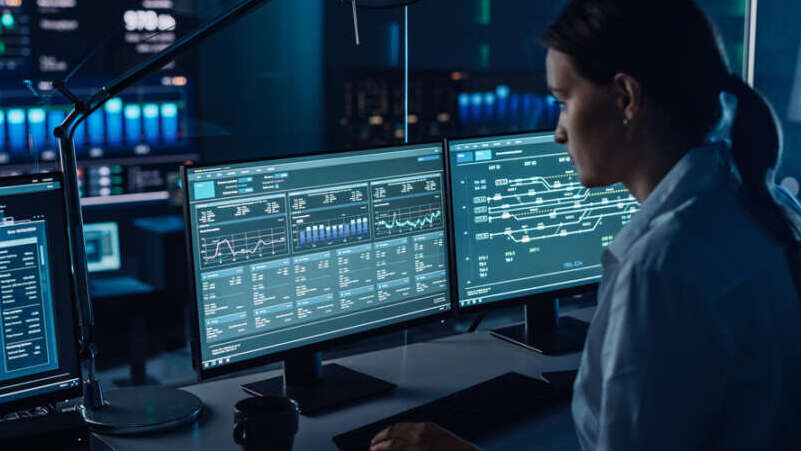
AI-enabled personal computers (PCs) and laptops may soon be the only hardware choices available to enterprises. They’re already changing how Federal systems integrators (FSIs) empower productivity, improve security, and bolster innovation in their own enterprises and in their work with Federal agencies. MeriTalk recently sat down with Bob Venero, founder and CEO at Future Tech Enterprise, to discuss how FSIs are approaching AI-enabled PCs, productivity benefits and security precautions, and how FSIs can vet and test AI solutions before investing for the long term.
MeriTalk: By 2025, AI-enabled personal computers (PCs) will command 43 percent of all PC shipments, with AI-enabled laptops accounting for 51 percent of total laptop shipments, according to Gartner. How do you see this trend affecting refresh cycles for end-user devices for Federal system integrators (FSIs)?
Venero: AI-enabled PCs are delivering productivity gains for FSIs, especially in terms of speed. They’re enabling FSIs to deliver program work faster and more efficiently for government agencies by moving more processing to the edge instead of relying solely on the server level. Anytime you can do something quicker, it’s going to be a more cost-effective solution, and that helps the FSIs, particularly when they are bidding on or operating under fixed-cost contracts.
We’re also seeing refresh cycles accelerate. That’s partly because original equipment manufacturers are aggressively pushing AI-capable hardware – making it harder not to purchase AI PCs – and partly because the market is realizing the performance boost these systems provide. Graphics cards from NVIDIA and onboard NPUs are helping drive adoption, along with software like Microsoft Copilot and ChatGPT. That said, FSIs are still more cautious than commercial entities. Risk avoidance is a big factor. Nobody wants to be in the news for an AI-driven data breach.
MeriTalk: What are some of the top uses of AI-enabled PCs for FSIs?
Venero: We’re seeing these systems used in everything from proposal drafting and code writing to engineering, 3D CAD modeling, digital twin simulation, and robotics design and learning.
We’re seeing incredible speed gains in areas like design and simulation. Something that used to take years – like designing and vetting a complex platform – can now be done in a fraction of the time using digital twins and AI models. Large language models are learning so quickly that capabilities we didn’t expect to see for another year are already here.
One exciting impact is that employees in lower-level roles can now generate higher-value output. The tools help bridge skill gaps, enabling them to do things that were previously outside their capabilities. That’s a game changer. It lets FSIs maximize the talent they already have and puts them in a stronger position to compete and innovate.
MeriTalk: What upskilling or reskilling is needed so FSIs can fully take advantage of the capabilities of AI-enabled PCs?
Venero: Upskilling may not be as necessary as you’d think. A lot of this technology is built around natural language input, which means someone doesn’t need to be a top-level engineer or proposal writer to create high-quality output. For example, an assistant can now draft a full proposal by leveraging AI tools. Similarly, an intern in engineering can create and test models that would have required far more expertise in the past.
This is bringing about a shift in how highly skilled staff are used. Now, their role is more about quality control than content creation – and that’s a more efficient model.
MeriTalk: A recent MeriTalk survey of 300 IT decision-makers showed that 78 percent are concerned about an increase in cybersecurity threats due to employees’ use of generative AI. At the same time, AI-powered anomaly detection on AI-enabled PCs can help identify and respond to potential security threats more quickly. What is the balance between risk and security?
Venero: It’s a pendulum. AI tools are getting better at detecting anomalies, but the biggest risk is still the human element – people using the tools in ways they shouldn’t. For example, if an employee puts sensitive internal design files into ChatGPT, that data is now out there. FSIs have to make sure guardrails are in place to prevent those mistakes.
The bigger risk that I see is the growing use of hyperscalers. They are huge targets for threat actors. We strongly advocate for keeping mission-critical systems and data on premises. AI PCs support that by allowing more processing to happen at the edge, without needing to expose sensitive workloads to the cloud. That’s key to maintaining uptime and minimizing exposure. Unfortunately, it may take another major breach before the pendulum swings back toward more on-prem solutions.
MeriTalk: Future Tech offers an extensive suite of AI solutions and partners with leading FSIs on a range of comprehensive IT infrastructure. How does Future Tech help FSIs realize the benefits of AI solutions such as AI-enabled end-user devices?
Venero: As a top partner with NVIDIA and Dell, we invested early in building AI solutions to help FSIs be more effective and reduce risk. One of the key tools we offer is an AI Readiness Assessment. It’s a quick online tool – about 15 minutes – that generates a 54-page report for FSIs. Then we discuss the results and how we can help on their AI journey. We help FSIs adopt AI solutions with the right success criteria and guardrails in place, so they don’t experience early failures.
For example, our proving grounds with NVIDIA and Dell, using Dell’s AI Factory, enable customers to test and vet solutions before investing. We’re also making it possible to use opex dollars instead of capex dollars for AI. That flexibility – whether it’s AI PCs, infrastructure, or AI offered as a service – is helping FSIs scale without huge upfront costs. Our AI PC as a service model is scaling quickly – we’re managing over 450,000 devices now.
